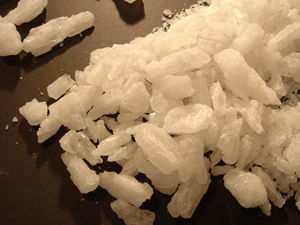Meth Decontamination: A Vital Process in Safeguarding Health and Homes
Methamphetamine contamination is a growing concern in many countries, including New Zealand. In 2022, the issue of meth decontamination remains a critical aspect of ensuring the safety of homes and the well-being of the residents. This article explores the challenges and processes involved in meth decontamination in New Zealand.

The Meth Problem in New Zealand:
Methamphetamine, commonly known as meth or ‘P,’ is a highly addictive and destructive illegal drug. The production and use of meth can lead to contamination of properties, making them hazardous for future occupants. The scale of this problem in New Zealand has prompted government agencies and private entities to address it comprehensively.
The Health Risks:
Methamphetamine contamination poses serious health risks to those living in affected homes. Residue from meth can linger on surfaces, in carpets, and within ventilation systems. Even minimal exposure to these residues can lead to health problems, including respiratory issues, skin irritation, and, in extreme cases, severe neurological damage.
Regulations and Standards:
To combat this issue, New Zealand introduced regulations and standards governing meth contamination in homes. As of 2022, the New Zealand Standard NZS 8510:2017 provides guidelines for the testing and decontamination of properties exposed to meth. This standard sets permissible levels for meth residue and outlines procedures for testing and remediation.
The Decontamination Process:
Meth decontamination is a complex and highly specialized process. Here’s an overview of the steps involved:
1. Testing: A crucial first step is to test the property to determine the extent of contamination. Sampling is performed on surfaces and in the air to measure methamphetamine levels.
2. Decontamination Plan: Once contamination is confirmed, a detailed decontamination plan is created, specifying the methods and equipment to be used.
3. Cleanup: The cleanup process may involve removing contaminated materials, cleaning surfaces, and potentially replacing certain building components.
4. Re-testing: After decontamination, the property is re-tested to ensure that methamphetamine levels are within acceptable limits.
5. Certification: If the property meets the standards, it is certified as safe for occupancy. This certification is crucial for real estate transactions.
Challenges and Costs:
Meth decontamination is not without its challenges. It can be a costly and time-consuming process, with expenses often falling on property owners. Additionally, locating and identifying hidden contamination can be difficult.
Conclusion:
In 2022, meth decontamination in New Zealand continues to be a pressing issue, with the government, industry professionals, and homeowners working together to address the problem. The importance of adhering to regulations and standards cannot be overstated, as they are essential for safeguarding the health and well-being of New Zealand’s residents and ensuring the safety of their homes. Meth decontamination is a necessary investment in the future of safe and habitable living spaces.